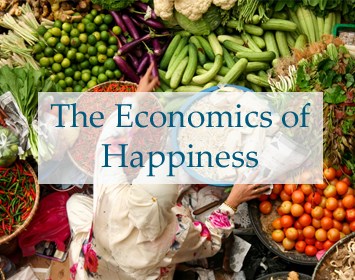Inauguration 2017 Special Coverage w/ Angela Davis, Naomi Klein, Ralph Nader & More
Menu

Special coverage in the Trump Era
From Public Citizen's Corporate Presidency site: "44 Trump administration officials have close ties to the Koch brothers and their network of political groups, particularly Vice President Mike Pence, White House Legislative Affairs Director Marc Short, EPA Administrator Scott Pruitt and White House budget director Mick Mulvaney."
Dark Money author Jane Mayer on The Dangers of President Pence, New Yorker, Oct. 23 issue on-line
Can Time Inc. Survive the Kochs? November 28, 2017 By Jane Mayer
..."This year, among the KochsŌĆÖ aims is to spend a projected four hundred million dollars in contributions from themselves and a small group of allied conservative donors they have assembled, to insure Republican victories in the 2018 midterm elections. Ordinarily, political reporters for Time magazine would chronicle this blatant attempt by the Kochs and their allies to buy political influence in the coming election cycle. Will they feel as free to do so now?"...
"Democracy in Chains: The Deep History of the Radical RightŌĆÖs Stealth Plan for America" see: our site, and George Monbiot's essay on this key book by historian Nancy MacLean.
Full interview with The New YorkerŌĆÖs Jane Mayer March 29, 2017, Democracy Now! about her article, "The Reclusive Hedge-Fund Tycoon Behind the Trump Presidency: How Robert Mercer Exploited AmericaŌĆÖs Populist Insurgency."
Democracy Now! Special Broadcast from the Women's March on Washington
The Economics of Happiness -- shorter version
Local Futures offers a free 19-minute abridged version of its award-winning documentary film The Economics of Happiness. It "brings us voices of hope of in a time of crisis." www.localfutures.org.
What's New?
September 26, 2011
The thorn in oneŌĆÖs flesh ŌĆō Ursula Gelis on nuclear testing in Kazakhstan.
ŌĆ£You resist as an act of solidarity.ŌĆØ Susan Sontag
Saiga tatarica, the Saiga antelope, is a critically endangered animal living in the Eurasian steppe. In the 1960s, a famous German zoologist visited the Kazakh Soviet Socialist Republic todayŌĆÖs independent Republic of Kazakhstan and researched SaigaŌĆÖs history.
During the ice age, those animals helped our hunting ancestors to survive. But the early humans overdid it. Hunting methods ŌĆśdevelopedŌĆÖ over time, but around 150 years ago the level of brutality reached its peak. Fences were erected which had an opening of about 3 miles. Later the path became narrower and narrower. In the end the animals were ŌĆśwelcomedŌĆÖ by a tiny opening equipped with needle sharp posts. The bellies of the disoriented creatures were ripped up and the proud animals were mercilessly slaughtered.[1]
One natural resource, perfectly adapted to the conditions of the semi-desert steppes, was nearly chased to extinction. Homo sapiens sapiens, the wise and clever human being, enjoys subduing nature even if it will have repercussions on human survival itself.
The former Soviet nuclear testing site at Semey in Russian, Semipalatinsk in Kazakhstan, was formally closed by President Nursultan Nazarbayev on August, 29, 1991 (decree No. 409). We are talking about an area covering 32,000 sq. km.
During the Soviet period, Kazakhstan was an agrarian republic supplying raw materials to the former Soviet economy with the military playing the leading role (OSCE Kazakhstan). [2] The experienced President Nursultan Nazarbayev responded to the demands of the Nevada-Semipalatinsk movement, the first anti-nuclear non-governmental organization created in the former USSR in 1989. It was founded by the Kazak poet Olzhas Suleimenov, who in February 1989 managed to assemble some 5,000 people in Almaty to denounce nuclear testing.
ŌĆ£The group, and the movement that it spawned, became an extraordinary strong grassroots force. Days later, two million people signed a petition to close the testing site.ŌĆØ[3]
The movementŌĆÖs goal was to protect against the scourge of nuclear threats. Today Mr. Suleimenov is the ambassador of Kazakhstan to UNESCO. On the first of September 2011 he will commemorate the closure of the testing site and the United Nations International Day against Nuclear Testing (since 2010 marked on August 29th) at the Atomic Testing Museum in Nevada, New Mexico, USA.
The Kazakh protest movement was inspired by the US activists who demonstrated against nuclear tests in their country. The civil society spirit of Nevadans reached the people in Kazakhstan. After expressing solidarity with the Native Americans who had been exposed to radiation, just as the people of Kazakhstan had, Kazakh antinuclear activists achieved through public outcry the closure of the former Semipalatinsk test site.
As Susan Sontag pointed out in her essay ŌĆśon Courage and ResistanceŌĆÖ: ŌĆ£The likelihood that your acts of resistance cannot stop the injustice does not exempt you from acting in what you sincerely and reflectively hold to be in the best interests of your community.ŌĆØ[4]

Photo: Ursula Gelis. UN Exhibition,
(NPT conference), May 2010.
What happened to the villagers in the Semey/Semipalatinsk region?
From 1949 until 1989, 456 atmospheric, above ground and underground nuclear and hydrogen explosions were conducted at the Semipalatinsk polygon in Eastern Kazakhstan.
Praskoviya Koloskova, now 85 years old still remembers what she witnessed 57 years ago, on the morning of August 12, 1953, when the Soviet Union detonated its first thermonuclear bomb at the Soviet UnionŌĆÖs main test site for atomic bombs some 90 miles from her village. ŌĆ£Usually, before a test, they recommended that we open our windows and doors and wait outside of our houseŌĆ”ŌĆØ [ŌĆ”] The radioactive fallout from all the above ground and atmospheric tests left Mrs. Koloskova with health problems and occasional nightmares. ŌĆ£I donŌĆÖt know what happened with me, but from that moment, I felt headaches and nervous disorders, and I imagined it many timesŌĆØ.[5] Until today the suicide rate of young people in the region is very high.
ŌĆ£We continue to suffer from the decades of this horror. In the regions surrounding the former testing site we continue to register very high rates of cancer-related diseases, birth abnormalities, and genetic mutations.ŌĆØ (Speech by Mr. Nurlan Mussin, Embassy of the Republic of Kasakhstan to the Kingdom of Norway on ŌĆśHiroshima DayŌĆÖ in Oslo [6th August 2011]).
We are talking of two different phases of testing: The period of atmospheric and above ground tests (1949-1963) and the underground test side series (1963-1989). The highest radiation levels could be measured among the populated centers of the districts of Abai, Beskaragay and Zhanasemey. [6]
About the pitiless exposure of innocent inhabitants of many villages to radiation read: Gusev et al.: The Semipalatinsk nuclear test site: a first assessment of the radiological situation and the test-related radiation doses in the surrounding territories. (www.ctbto.org/nuclear-testing/. And: Fallout in Kazakhstan. ŌĆśThe human wreckage of Soviet nuclear testsŌĆÖ, by Robert Elegant. In: National Review, September 16th, 2002).
The Soviet military established a secret research facility about 60 kilometers away from the testing ground, first named Semipalatinsk-21, later renamed Kurchatov. [7] Igor Wassilijewitsch Kurchatov, called ŌĆśBorodinŌĆÖ, is remembered as the Soviet J. Robert Oppenheimer. ŌĆō Until today the survivors feel as having been ŌĆśguinea pigsŌĆÖ for cold warrior ambitions and addictions.
The 1st century Christian apostle Paul from Tarsus receives the ŌĆśthorn in his fleshŌĆÖ in order to behave modest and without arrogance. He is interpreting this ŌĆśpainŌĆÖ as a contribution to his spiritual development.
Saiga tatarica was speared brutally. The human cost of the nuclear arms race is paid by the innocent local population through radiation and the fatal heritage for future generations. Their wounds cannot be healed. In a metaphorical way we are obliged to extract their thorns by courage and resistance.
Kazakhstan inherited the 4th largest nuclear arsenal in the world which was bigger than the nuclear weaponry of China, the UK and France put together! 1,200 Intercontinental Ballistic Missiles with multiple war heads were stationed in Kazakhstan along with a number of other types of weapons of mass destruction (WMD), including chemical and biological weapons. (N. Mussin).
The Kazakh government decided not to fall into the trap of thinking of nuclear weapons as a vehicle of pride but to renounce its arsenal of WMDŌĆÖs. Advocating a new concept of security, based on diplomacy and the path towards a democratic society seemed to be a safer and healthier way to cope with the challenges ahead.
After the achievement of establishing a nuclear weapon free zone in Central Asia (2006), President Nursultan Nazarbayev calls for an international treaty to ban nuclear weapons.
On his visit to Kazakhstan in April 2010 Secretary-General Ban Ki-Moon was urging ŌĆ£leaders of all countries, especially nuclear weapons states, to follow KazakhstanŌĆÖs example.ŌĆØ[8]
ŌĆ£All struggle, all resistance is ŌĆō must be ŌĆō concrete. And all struggle has a global resonance. If not here, then there. If not know, then soon. Elsewhere as well as here.ŌĆØ[9]
Websites: www.ican.org/1989. www.dinarasagatova.com/polygon/.
Related articles by Ursula Gelis:
Interview with Dr. Steinar H├Ėibr├źten, research scientist at the Norwegian Defence Research Establishment (pdf, 4 pg.download)
Kazakhstan ŌĆō A convincing state in the struggle for a world free of nuclear weapons. (The Hague, 30 August 2011). Interview with Sverre Lodgaard, Senior researcher at the Norwegian Institute of International Affairs (NUPI).
(pdf, 3 pg.download)
Ursula Gelis is a German political scientist affiliated with WILPF and the Norwegian anti-nuclear movement. She is a member of the WLOE e.V. executive committee and can be reached through info(at)wloe.org
[1] Bernhard Grzimek. Wildes Tier-weisser Mann. Muenchen 1976, page 115.
[2] OSCE Kazakhstan. Country profile 2010, page 76.
[3] Togzhan Kassenova. ŌĆØThe lasting toll of SemipalatinskŌĆÖs nuclear testingŌĆØ, in: Bulletin of the Atomic Scientists, 28th September 2009.
[4] Susan Sontag. At the Same Time. Essays and Speeches. New York, 2007, page 190.
[5] See: Building a Nuclear Safe World: The Kazakhstan Way. (Ed.): Ministry of Foreign Affairs, Astana 2010, page 29.
[6] Radioaktive Verseuchung von Himmel und Erde. AtomwaffentestsŌĆ”in: IPPNW Wissenschaftliche Reihe Bd. 2, Berlin 1995, page 78.
[7] Togzhan Kassenova. ŌĆØThe lasting toll of SemipalatinskŌĆÖs nuclear testingŌĆØ, in: Bulletin of the Atomic Scientists, 28th September 2009. -
[8] See: Building a Nuclear Safe World: The Kazakhstan Way. (Ed.): Ministry of Foreign Affairs, Astana 2010, page 79.
[9] Susan Sontag. At the Same Time. Essays and Speeches. New York, 2007, page 191.

